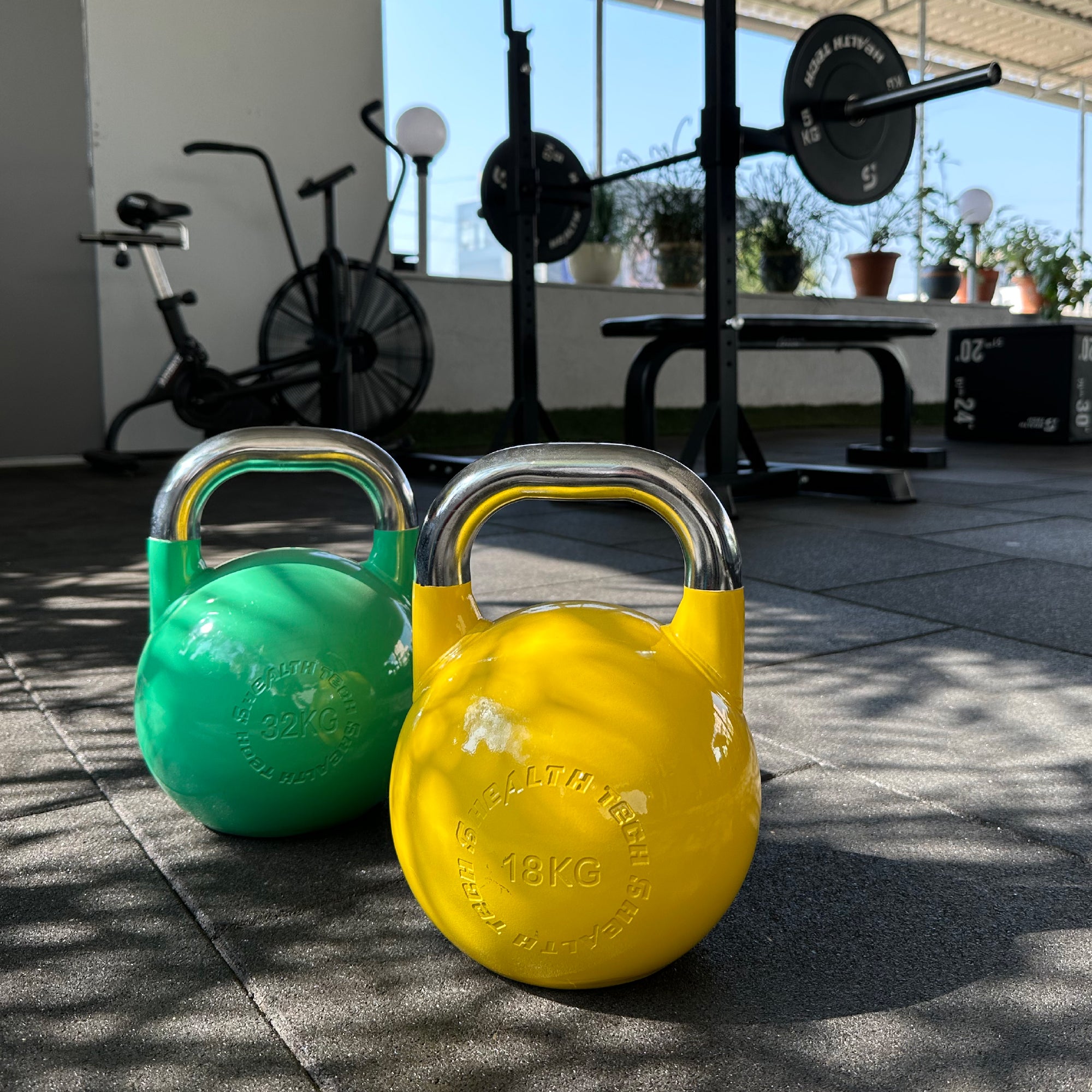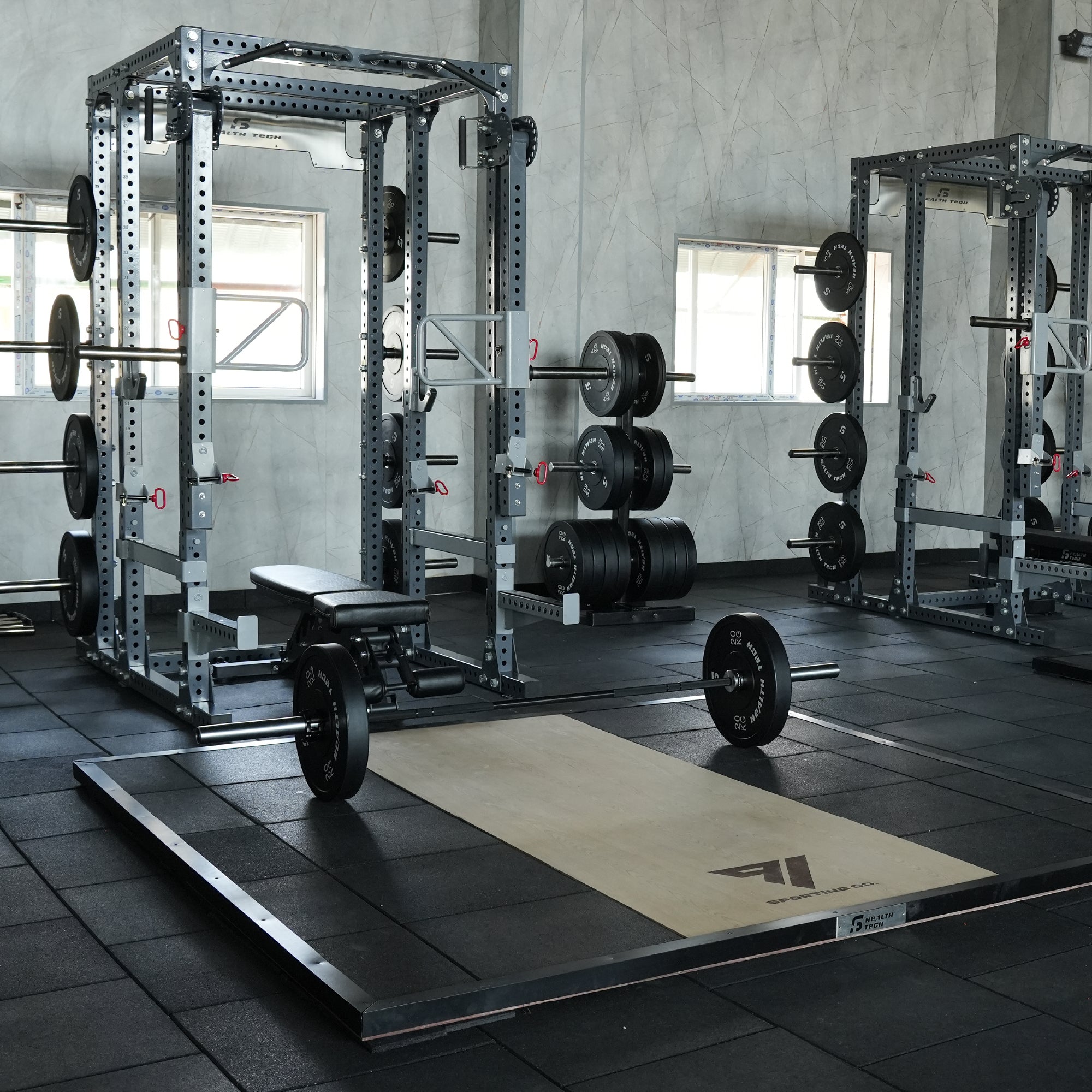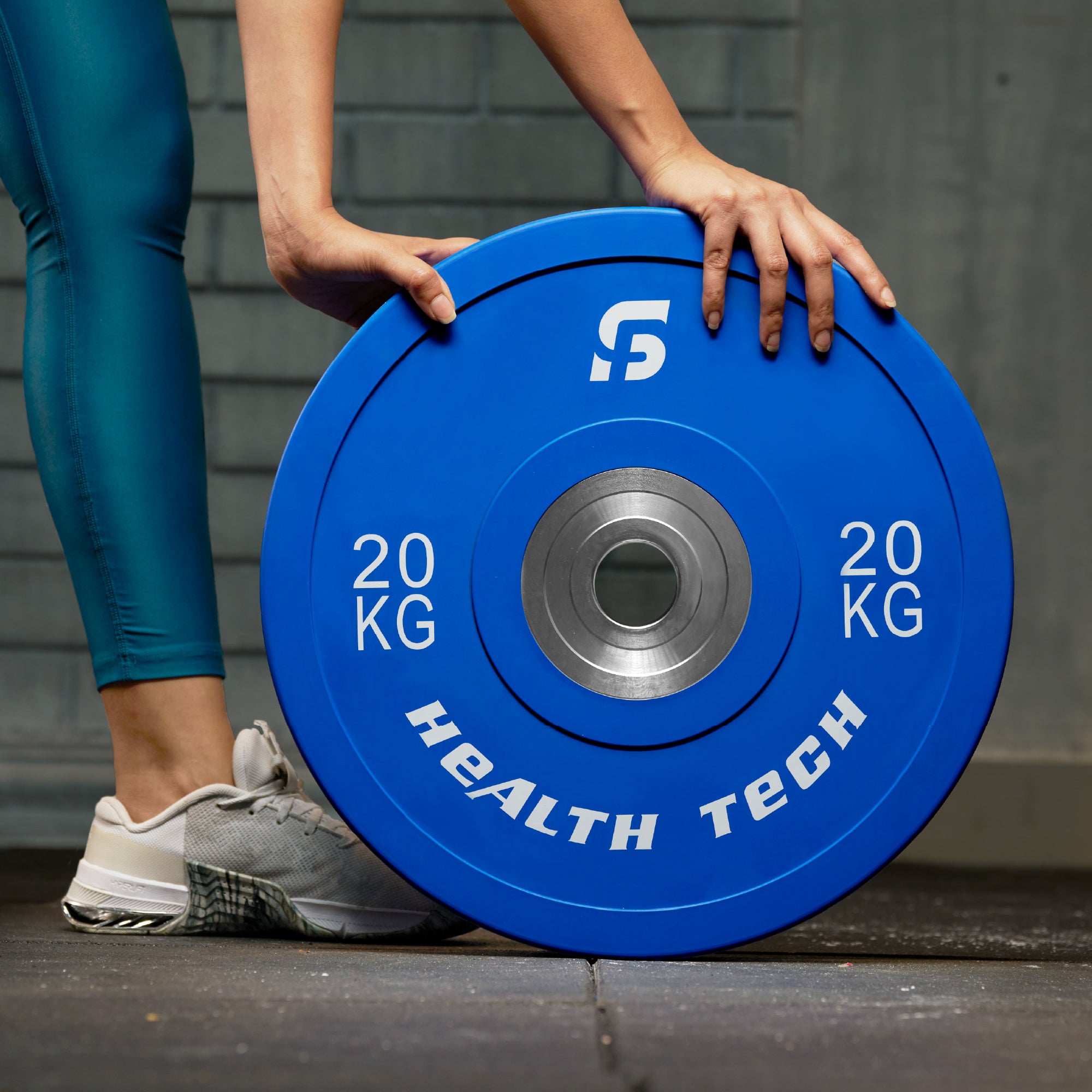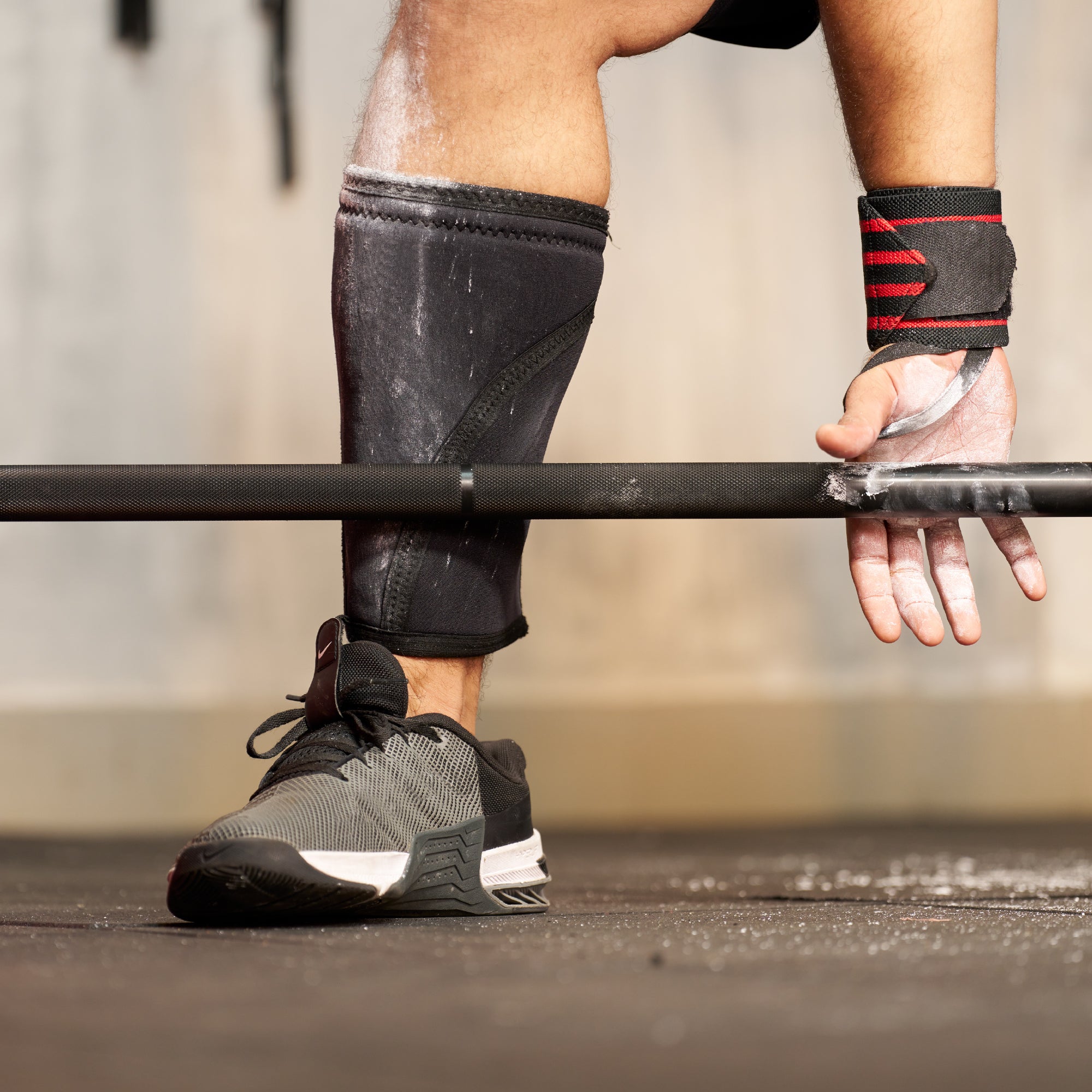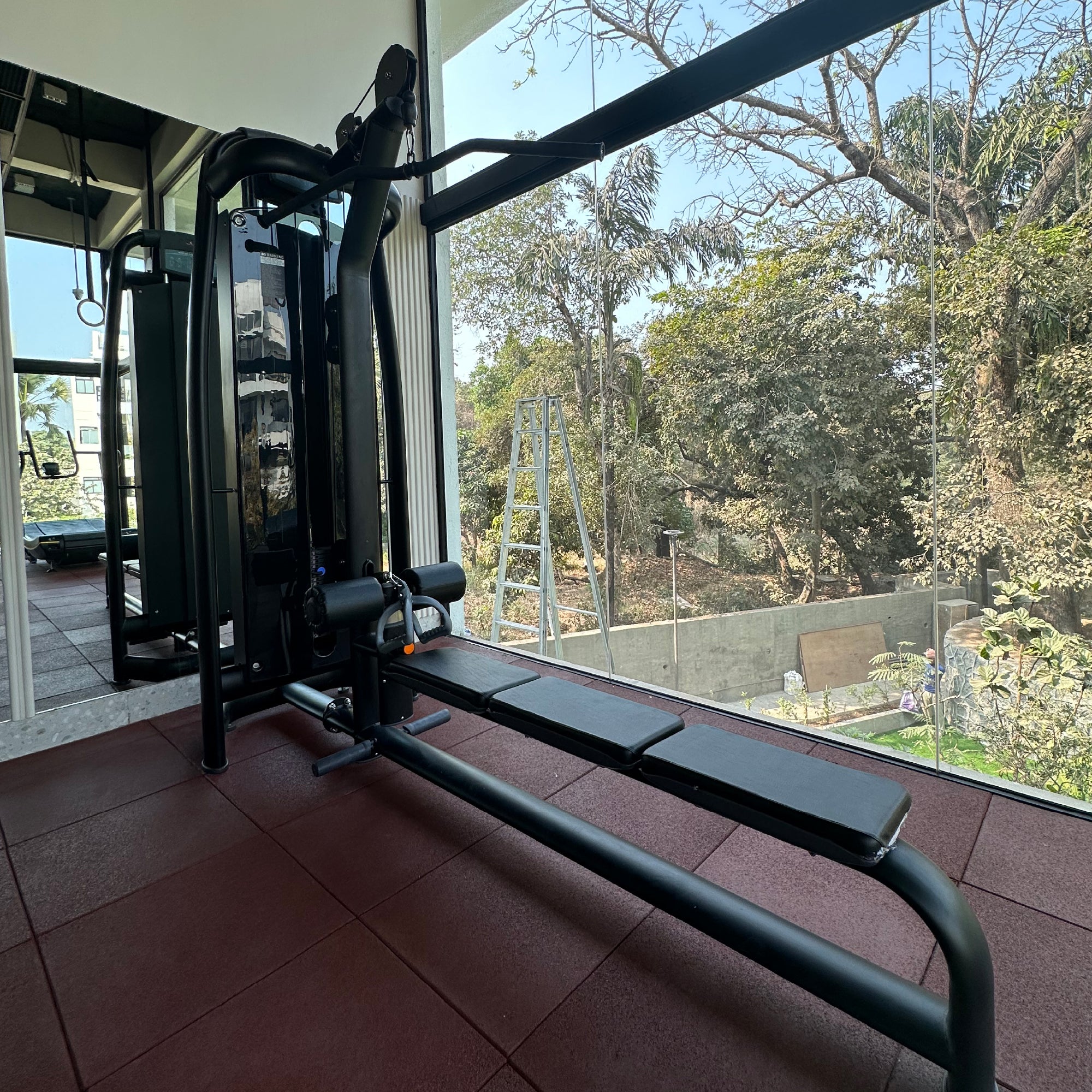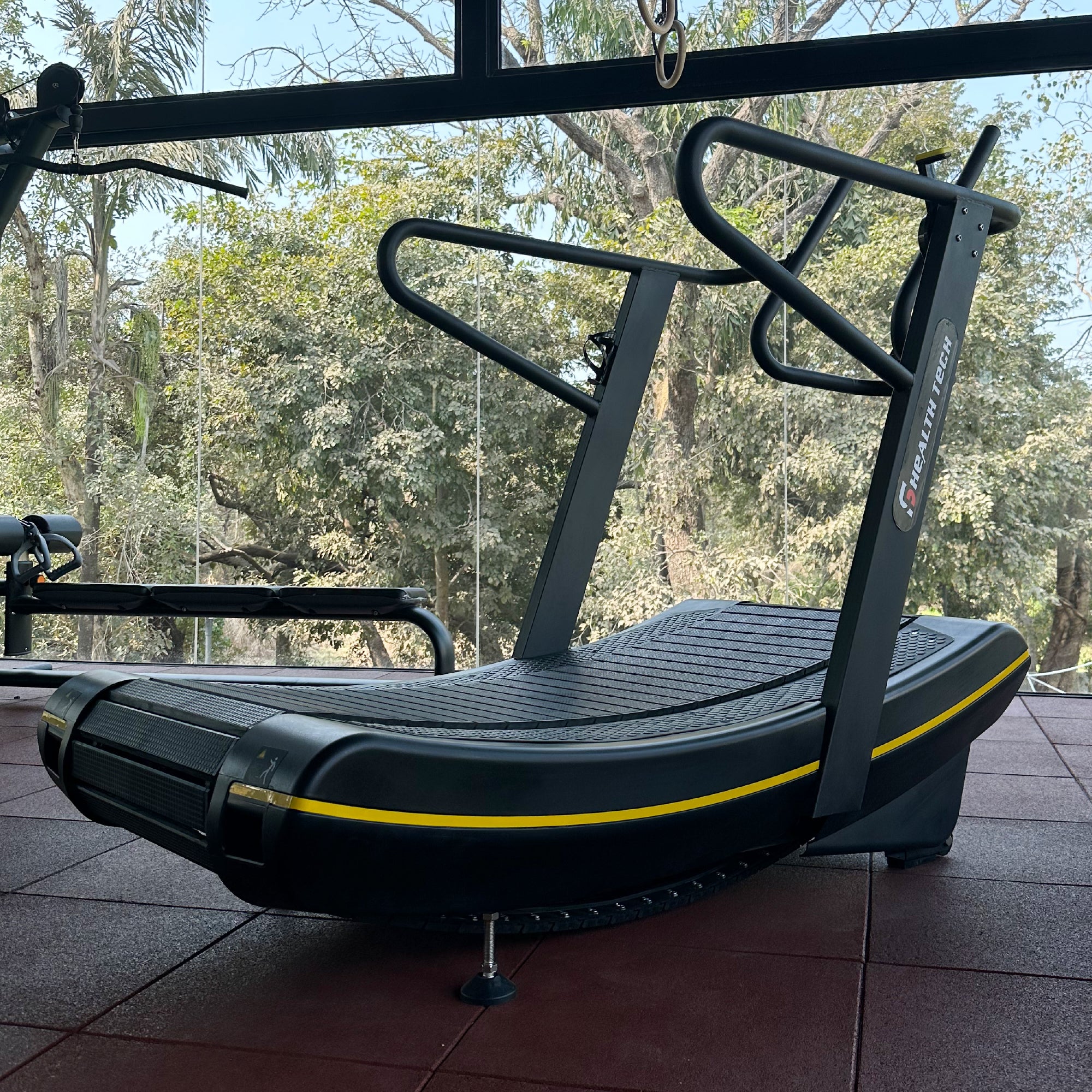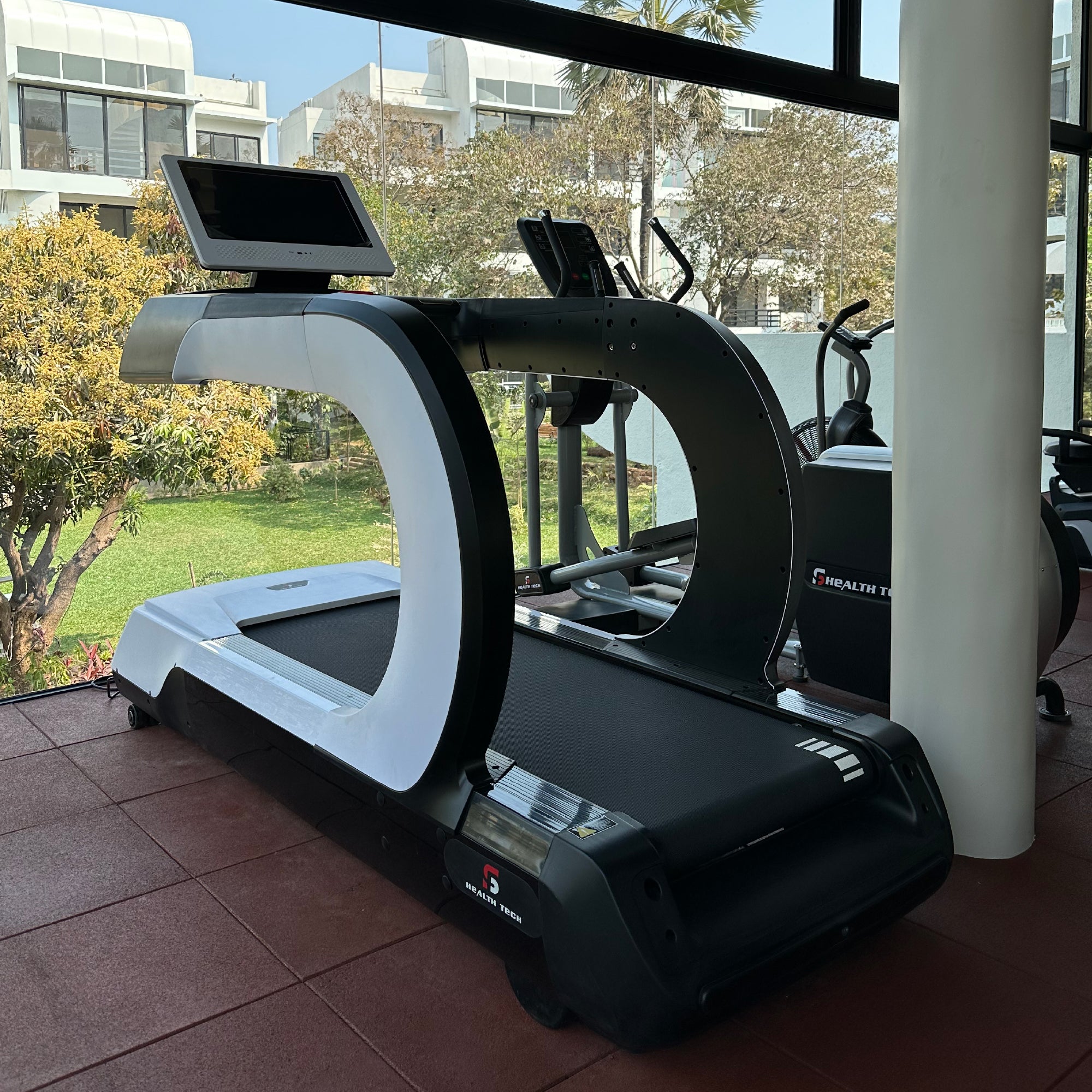How to Lose Belly Fat?

An expanding waistline does more than make it hard to button up your jeans. Research shows that belly fat also carries serious health risks. The good news is these threats can be reduced as you reduce your belly fat.
However, it's not easy to reduce belly fat because it's different from other kinds of fat. Additionally, if you have to lose your belly fat, spot reduction is not possible. This means you have to reduce your overall fat percentage to reduce your belly fat. The best way to get rid of belly fat is to adopt a balanced approach - a combination of a nutritious, well-balanced diet, active lifestyle, increase stamina and manage stress levels.
Let's start by understanding what fat is in our body and how it affects our abdominal region.
Types of Fat
Fats are of 2 types: White Adipose Tissue (WAT) and Brown Adipose Tissue (BAT). Both of these fats have different purposes. Both of these fats behave differently in our bodies. Both of these fats are needed for the proper functioning of our physiological processes.
Let's take a look at what they are and how they behave:
-
White Adipose Tissue (WAT)
Most people, when they hear 'fat,' associate it with white adipose tissue. The WAT cells store energy from the food you consume. So when you consume excess calories, these cells get bigger, causing weight gain.
-
Brown Adipose Tissue (BAT)
Brown Adipose Tissue does not store energy but burns it. When you get a cold, the BAT cells activate and burn calories to warm you up, thus maintaining a healthy body temperature. This type of BAT is mostly found around major blood vessels and organs.
Location Of Fat On Your Body And Its Impact On Weight Loss
The common fatty areas, such as your thighs and abdomen, usually contain a combination of White Adipose Tissue(WAT) and Brown Adipose Tissue(BAT). Although both types of fat are essential for health, too much or too little can cause an imbalance in your hormones and body functions.
Belly fat falls into two distinct categories:
- Subcutaneous Fat
- Visceral Fat

The location of WAT and BAT determines how difficult it is to get rid of it.
Visceral Fat
Visceral abdominal fat is located deep inside your abdomen. Visceral fat cushions organs and blood vessels and is present around all the major organs in the abdomen, like the liver, heart, lungs, and stomach. A small amount of this fat is required for your overall health.
Excess of visceral fat is linked to serious health risks, including lipid metabolism and glucose impairment, leading to glucose intolerance, insulin resistance, hypertension, the elevation of lipid levels, type 2 diabetes, cardiovascular diseases, and some cancers.
Your belly is likely to be hard and not squishy if you have excess visceral fat. That said, this fat is usually the first to disappear when you begin to follow a healthy diet and exercise plan.
Subcutaneous Fat
This type of belly fat accumulates below the skin. This fat can be felt by pinching on your stomach, arms, and legs. It is all over the body but more generously around the hips, waist, and thighs. It cushions your bones and muscles and also serves as an energy reserve for your body.
Subcutaneous fat is visible to the eye, but it takes more effort to lose because of the function it serves in your body. The subcutaneous fat present in healthy amounts can actually help protect you from overeating and Type 2 diabetes.
When excess visceral fat is burned, the body then begins to burn excess subcutaneous fat. Unfortunately, if the subcutaneous fat is in excess, the level of WAT in your body increases. Moreover, overweight or obese people experiencing hormonal changes and having high WAT levels are at an increased risk of developing chronic health issues.
How Much Belly Fat is Too Much?
If your waist measures 40 inches+ as a man or 35 inches+ as a woman, then you are more likely to have a dangerous amount of belly fat.
Health Risks Associated with Excess Belly Fat
-
Heart Disease
High levels of belly fat make people more vulnerable to cardiovascular diseases. Visceral fat is known to pump out cytokines into the body. The cytokines released are linked to heart disease. Cytokines are dangerous chemicals that affect the cells' ability to regulate blood pressure and insulin. When organ functions are not regulated, the heart takes a hit.
-
High Blood Pressure
Scientists believe that visceral fat puts pressure on the kidneys and liver, increasing the production of bad cholesterol. This cholesterol moves into the arteries of the heart, where it forms a thick, waxy plaque. As plaque lining the walls of the heart and arteries grows hard and thick, it forces the heart to pump harder to move the blood throughout the body. The result is high blood pressure.
-
Type 2 Diabetes
When compared to hip fat or thigh fat, belly fat is known to put people at a higher risk of acquiring type 2 diabetes. This is because visceral fat is responsible for insulin resistance.
When foods with high levels of sugar are consumed, the sugar level and insulin in the bloodstream increases. This forces the body cells to take the sugars and insulin in to produce energy. But over time, the body cells get used to this high sugar level and stop responding to it, resulting in a rise in blood sugar and insulin resistance.
-
Dementia and Alzheimer's
Studies have revealed that high amounts of visceral fat can cause the brain to shrink, increasing the risk for dementia and Alzheimer's as people age.
Studies show that people with a greater level of abdominal obesity are up to 3 times more likely to develop mental conditions such as dementia when compared to people with less abdominal fat. Having a large abdomen equates to lesser brain volume. This means, as you age, the functioning of the brain reduces. The culprit here could be the hormone leptin released by the fat cells. Leptin adversely affects brain cells, memory learning, and appetite regulation.
-
Cancer
Excess fat cells signal your body to produce hormones that are known to trigger cancerous activity within healthy cells. They cause the healthy cells to divide and multiply. The more the cells divide, the more chances for them to mutate to a cancer cell. So more fat equals more chances for you to develop cancer of the colon, kidney, breast, gall bladder, and pancreas.
-
Depression
Visceral fat is known as an active pathogenic fat because it impacts our body negatively. Research has found evidence that suggests a strong connection between visceral fat levels and depression or depression-like symptoms. Studies have revealed that belly fat reduces healthy neurotransmitter functioning. It also causes hormonal changes and this imbalance can cause high levels of mood swings. If these mood swings are not treated, it can eventually lead to depression.
-
Sleep Disorders
A belly with large deposits of fats triggers loud snoring and sleep apnea. A person suffering from sleep apnea stops breathing for a few moments several times at night. The result is a night full of snoring, waking up, and feeling restless.
-
Arthritis
Arthritis is a very common disease experienced by people with excess abdominal fat. Fat is chemically active and constantly releases inflammation-causing proteins such as cytokines and adipokines. These proteins travel through your body, making it inflamed everywhere, including your joints. As a result, you are more likely to develop osteoarthritis, rheumatoid arthritis, and also fibromyalgia. Other than creating inflammation, the excess fat puts extra stress on your joints.
Types of Common Belly Fat Depending on How They Look

-
Hormonal Belly
Hormones help regulate many bodily functions, including metabolism, hunger, stress, and sex drive. If there is a deficiency in certain hormones, it can result in weight gain around the abdomen. This is also called hormonal belly.
-
Beer or Alcohol Belly
Drinking excessive amounts of alcohol leads to fat buildup around the belly, typically known as a beer belly.
-
Mommy Belly
Mommy belly is usually seen after weight loss that happens in the postpartum stage. It is the subcutaneous fat located in your abdomen that drapes over your waistline.
-
Bloated and Distended Belly
Bloating and distension are indications of digestive disorders, which may eventually lead to belly fat.
-
Lower Belly Fat
The soft fat in the lower abdomen is usually due to minor digestive issues and a sedentary lifestyle.
-
Punctured Tire Belly Fat
The pronounced fat bulge around the waist is the punctured tire belly fat. It mainly occurs due to an unbalanced diet and a prolonged sedentary lifestyle that eventually leads to obesity.
Common Causes of Belly Fat
-
Sugary Food and Drinks
Balanced levels of insulin do a great job in managing blood sugar levels that rise after we eat. When you consume more sugary foods and drinks, your blood sugar levels rise; the higher they rise, the more insulin is needed to bring the balance back. This slows your metabolism, contributes to insulin resistance, reduces your ability to burn fat, and causes weight gain.
-
Low Protein, High Carb Intake
A low protein, high carb diet increases your hunger and makes you feel unsatisfied. As a result, your metabolic rate decreases and your calorie intake increases, leading to weight gain around your belly.
-
Trans Fats
Trans fats are of two types: natural (animal products) and artificial (hydrogenated vegetable oils). In artificial trans fat, hydrogen is added to unsaturated fats to make fats more stable. These fats are usually found in packaged foods like baking mixes, crackers, and muffins to increase their shelf life. However, artificial trans fats are known to causes inflammation, driving up insulin resistance and leading to excess belly fat.
-
Lack of Exercise
It's no surprise that an inactive lifestyle is one of the biggest risks for poor health. If your calorie consumption is more than what you burn off, you will gain weight and are more likely to store fat around your belly.
-
Binge Drinking
Studies have shown that consuming excess alcohol can cause inflammation and prevent fat burning. This is because the excess calories from alcohol get stored right in your belly fat.
-
Imbalanced Gut Bacteria
Your gut bacteria keep your immune system healthy. But if the balance of the gut bacteria is thrown off, it can impact your metabolism and lead to weight gain and belly fat.
-
Genetics
Your genes play a significant role in whether or not you become obese. They seem to affect your metabolism and also the rate at which your body converts fat into fuel. Your genes can also predispose you to the risk of developing obesity-related diseases.
-
Stress
When you are stressed, your body releases a steroid hormone called cortisol, which interferes with your metabolism. Stressed people often turn to food for comfort, and the cortisol released causes the excess calories to accumulate around the belly and other areas for later use. High levels of stress cause a buildup of cortisol in our systems. Over time, this stress hormone can cause increased belly fat.
-
Smoking
Researchers believe that people who smoke may have better control of their overall weight, but heavy tobacco use pushes the fat into central areas, resulting in a protruding tummy.
-
Poor Sleep
Studies have revealed that poor sleep slows your metabolism because your body stores energy and stimulates the cells to conserve fat, leading to abdominal fat gain.
How to Lose Belly Fat? Strategies, Lifestyle Goals, and Exercises Backed by Science.
If you want to lose overall body fat, you need to be in a calorie deficit. This means you need to burn more calories than you can consume. The real key to keeping belly fat off is to create an individualized balanced diet, active lifestyle, and manage stress levels. We've listed a few scientifically proven strategies and belly fat exercises you can follow to lose weight.
-
Change Your Diet
The first step for losing belly fat is to have a good look at your diet. Then, start building meals around foods that are known to reduce both subcutaneous and abdominal fat. Include the following types of foods in your diet:
-
High-protein foods such as fish, nuts, whole eggs, turkey, chicken, and dairy products, keep you full for a longer time, thus reducing your likelihood of overeating throughout the day.
-
Fibre present in foods such as oats, almonds, berries, prunes, Brussel sprouts, broccoli, and green beans plays an important role in keeping you satisfied while reducing bloating and promoting healthy gut bacteria.
-
Water helps you stay hydrated. It reduces constipation and gives a boost to your metabolism, thus helping you reduce your belly fat.
-
-
Manage Stress
Constant stress can bring your fat-burning metabolism to a screeching halt. But lowering the stress levels is easier said than done. Follow these tips to manage stress and lose belly fat.
-
Engage in pleasurable activities that relieve stress, such as dance, cycling, playing sports, etc. These activities are great for stress management because they produce endorphins.
-
Practice yoga, meditation or deep belly breathing. These activities are proven to combat stress levels and the metabolic syndrome associated with it. Meditating is also known to help lower your cortisol level and balance your estrogen/progesterone hormone levels.
-
-
Cut Down on Alcohol Consumption
Consider drinking alcohol in moderation or abstaining from it completely. This will increase your metabolism as your liver will be more focused on burning fat for energy than on metabolizing the alcohol, resulting in reduced fat around your waistline.
-
Avoid Refined Sugar
When you avoid all liquid forms of sugar, including sugar-sweetened beverages, such as sweet tea, soda, punch, or alcoholic drinks, your body produces less insulin. Reduced insulin levels not only reduces fat accumulation around the waist but they also prevent the fat cells from going into calorie-storage overdrive.
-
Cut back on carbs
When you reduce your carb intake or replace refined carbs with healthy carb sources, such as legumes, whole grains, or vegetables, you improve your metabolic health and reduce belly fat.
-
Get Plenty of Restful Sleep
Your body burns fat naturally while you're asleep. Your body performs metabolic functions more actively when you are sleeping than it does during the day when you're awake. So, get plenty of quality sleep (at least 7 hours per night).
-
Exercise
Spot training for a flat belly is a myth. Performing exercises to lose weight in specific areas of your body is not usually effective. Instead, the best way to achieve your goal is to embrace an overall body wellness program that is a combination of a healthy diet and consistent variation of exercises.
Types of workouts for a flat belly:
Aerobic Exercise and Cardio
This group includes activities like running, skipping, swimming, etc. These activities increase the heart rate. The more intense the routine, and the longer it is performed, the more calories it will burn.
Here are a few cardio equipments to get you started on your journey.
High-Intensity Interval Training (HIIT)
HIIT is a method employed to optimize the fat-burning potential of aerobic exercises. It usually involves short bursts of intense activities followed by periods of low activities. An example of HIIT is 1 minute of running, following by 2 minutes of walking, then 2 minutes of running or doing other intense exercises such as skipping.
Strength Training
Strength-based exercises usually involve lifting weights. Weightlifting helps burn fat as it helps build muscles. Muscles are known to burn calories. It is a known fact that people with more muscle burn more calories, even when they are not exercising.
Here are a list of machines that will enhance your strength training.
Ab Exercises for a Strong Core
-
Crunches
Muscles Worked: Rectus abdominis
How to do Crunches:
Step #1: Lie on your back, bending your knees, and keep your feet flat on the floor with hip-width apart.
Step #2: Place hands behind your head.
Step #3: Pull your abdominals inward, curl up forward to reach your knees, keeping your head and shoulders off the ground.
Step #4: Pause. Then slowly lower your back down to the floor. Do desired repetitions.
-
Sit-Ups
Muscles Worked: Lower back, hips, and spine
How to do Sit-Ups:
Step #1: Lie on your back with knees bent and feet anchored.
Step #2: Tuck your chin into your chest.
Step #3:strong> Put your fingers on the back of your ears.
Step #4: Exhale and lift your upper body all the way toward your thighs.
Step #5: Inhale as you slowly lower yourself back down to the floor.
-
Leg Drops
Muscles Worked: Core muscles, particularly your transverse abdominis
How to do Leg Drops:
Step #1: Lie on your back with both legs up, pointing to the ceiling.
Step #2: while keeping your abs tight, lower one leg a few inches from the floor. Switch legs.
-
Reverse Crunches
Muscles Worked: Rectus abdominis, transverse abdominis, and obliques.
How to do Reverse Crunches:
Step #1: Lie on your back, lift your legs while bending your knees to 90°.
Step #2: Keep your hands by your sides and your palms pressing into the ground. You can also place your hands underneath your lower back for added support.
Step #3: Engage your abs, pull your knees to reach your chest and lift your hips off the floor. Pause. Slowly move to come back down.
Step #4: Tap your toes lightly to the floor without resting your weight on them. Do repetitions.
-
High Plank
Muscles Worked: Back, hips, legs, shoulders, and chest.
How to do High Plank:
Step #1: Get into a pushup position.
Step #2: Keep your toes and palms firmly fixed on the ground, back straight, and core tight; hold the plank position for as long as you can.
The Bottom Line
There are no magic solutions for losing belly fat. It requires effort, commitment, and perseverance. Adopt the strategies, exercises and lifestyle goals discussed above, and lose the belly fat around your waist successfully.


